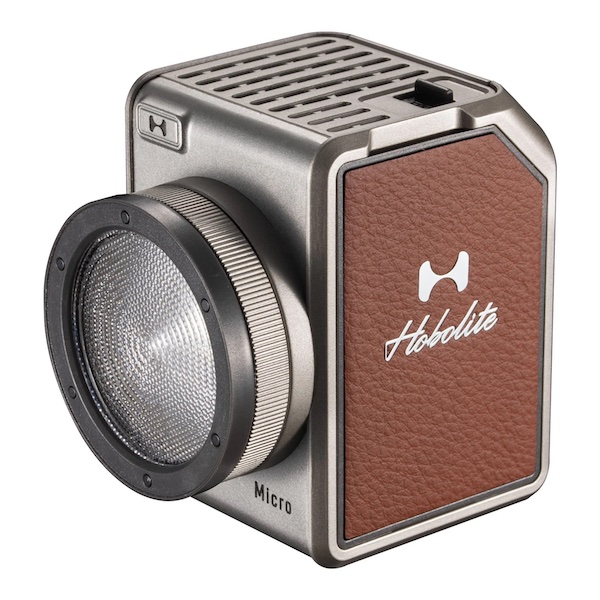Lighting
Billed as the “world’s smallest studio light,” the Profoto A1 is, in form and function, both an on-camera and off-camera flash that can be easily integrated with studio lighting systems.
This 76 W/s flash features a round head and provides both TTL and manual exposure options, as well as High Speed Sync. Its rechargeable Li-ion battery provides up to 350 full-power flashes and recharges in about 80 minutes. Other notable features include built-in AirTTL, a unique magnetic mount for light modifiers and a modeling light.
This $995 unit is currently available for Nikon and Canon, with a Sony model in the works. The flash comes with several accessories, including a bounce card, 180-degree dome diffuser, wide lens diffuser, carry bag, stand and micro USB cable. Other accessories, including gels and soft bounces, are also available.
Most test shots were captured using the Profoto A1 mounted on a Nikon D500 with a NIKKOR 24-70mm f/2.8 lens.
Design
From its round flash head to its convenient lock, the Profoto A1 feels sturdy. It weighs in at 1.2 pounds with the battery and measures 4.3 x 3.0 x 6.5 inches.
It is, by far, the most intuitive flash we’ve ever used thanks to its simplified menu system. Just push the center settings button to activate a clearly labeled menu. Each individual box contains multiple settings for such functions as Modeling Light intensity, Zoom, Standby time, Sync, AF Assist light and more. This menu also provides access to the built-in Air Remote Channel and 3 Groups (per channel) settings. Move the switch on the left side from TTL to Manual and the A1 remembers your TTL setting so you can seamlessly tweak the current exposure.
The head features a magnetic mount for effortlessly attaching light modifiers and filters. The pull between the dome diffuser (our favorite accessory, included in the bundle) and the mount was so tight that it was a little difficult to remove, so you know it’s not going to fly off as you work a wedding reception or other event.
The head tilts and angles easily but securely locks into position for bounce flash. The zoom can be adjusted manually or automatically and you can focus the light to get a wider or more centralized beam. There’s also a focus assist light that can be activated or disabled, and a small port is available for firmware updates.
The battery is external, and just a quick press of a release button allows you to change batteries within seconds—a real bonus if you notice that the flash’s battery level is getting low at a critical, gotta-get-that-shot moment.
A word of caution, though: you may want to dial down the LCD brightness when shooting in low light. And the Test button (which also serves as the on/off control) is very bright and doesn’t dim with the LCD, so it may be distracting.

Paired with the Dome Diffuser, the Profoto A1’s was gentle enough to capture these photos at the Westminster Kennel Club Dog Show without disturbing or distracting the furry subjects. Photos © Theano Nikitas
Performance
The battery life on the A1 is excellent and delivers 350 full-power flashes on a single charge. Recycling is fast—1.2 seconds at full power and much faster at lower output settings. Better yet, we noticed no slow-down in recycling time as the battery ran out of juice. Color was also consistent across the board, as was TTL exposure.
Start up is a little slower than we’d like but only because you have to push and hold the large Test button and then turn the main dial to power on the flash. The latter is a safety feature to prevent accidentally turning on the power.
What We Liked
“Liked” doesn’t describe how much we loved the you-don’t-have-to-read-the-manual menu system. The rounded head, especially with the dome diffuser, produced beautiful light with soft, even fall-off, and even after shooting all day, we had plenty of battery juice to power us through.
Being able to retain the TTL setting when switching to manual was extremely convenient, as was the ease with which we were able to change (and even stack) light modifiers and filters thanks to the magnetic mount. And, having easy access to future firmware updates via a micro USB port is a bonus.
What We Didn’t Like
There’s no getting around it—the A1 is expensive, especially if you don’t have other compatible Profoto equipment. As I mentioned before, I’m also not a huge fan of the on/off system. After pressing the Test button, you have to turn the dial four times to power on the strobe. And if you’re in Manual mode, it’s easy to accidentally change exposure when turning the dial.
Bottom Line
The Profoto A1 is not for everyone. There are plenty of excellent flash units on the market for much less money than the A1 commands, such as the $600 remote control Nikon SB-5000 Speedlight.
However, if you’re a Profoto user and already have a Profoto Air Remote, then the A1 belongs in your gear bag, especially if you’re a wedding or event photographer. Frankly, although I’m not a Profoto user and already have about four speed lights, the A1 is really tempting because of its ease of use and the beautiful, soft light it produces. We don’t expect other manufacturers to completely change their design to a round flash head (though we’d love that), but they certainly can take a lesson from the A1 on designing a menu system that’s so very easy and intuitive to use.
Related: 6 Portrait Photographers Share Their Biggest Lighting Challenges
17 Lights and Modifiers for On Location Shooting
A Handy Guide to Modifiers and What They’re Good For







